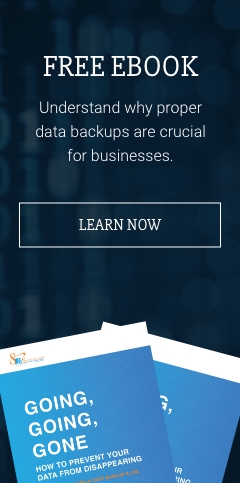The old adage “if you want a job done right, do it yourself” is sound advice in many situations. Business IT isn’t one of them. That’s because, rather than merely being the driving force behind good business, technology is a critical enabler. However, business leaders must focus on making key strategic decisions, while employees are best-suited to serving customers rather than worrying about IT problems.
Nowadays, businesses of all sizes across all industry sectors are moving their mission-critical applications over to hosted computing environments in offsite data centers or co-located server facilities. These outsourced models present many advantages, particularly for cash-strapped startups and small- and medium-sized businesses (SMBs). As a cloud services provider, we will set the record straight on these misconceptions about the cloud:
#1. The cloud is great for everything
Many vendors will have you believe that the cloud is the be-all and end-all of business IT. This simply isn’t true, and it likely won’t be in the foreseeable future. The cloud offers numerous proven benefits for a huge range of applications and services, from cybersecurity to payment processing to CRM. But many companies actually opt for a hybrid environment to keep applications that aren’t best-suited to the cloud in-house.
#2. The cloud is bad for security and compliance
One of the most common misconceptions about the cloud is that it requires compromising on crucial matters such as data security, privacy, and compliance. For example, the public cloud involves storing apps and data on machines in huge data centers where resources are shared between hundreds or even thousands of other users.
The truth is that data centers operated by the likes of Amazon, Microsoft, or Google, are more cutting-edge in terms of security than what any SMB could hope to achieve by themselves. Still unconvinced by the public cloud’s safety? You can choose to set up a private cloud, a model of cloud computing that allows individual organizations to operate in a distinct cloud environment, offering greater control and privacy.
#3. The cloud is prohibitively expensive
Most vendors cite cost savings as a key benefit of migrating to the cloud, but that isn’t the case for all types of cloud services and all types of organizations. As such, it’s important for business leaders to evaluate the total cost of ownership (TCO), or the financial estimate that buyers and owners use to determine the cost of a product or service (typically over a period of five years), compared to what it would cost to build, install, and maintain a comparable in-house system.
Indeed, the cloud may turn out to be more expensive in the long term, especially if you don’t do your research. But by partnering with a dependable cloud services provider, you can enjoy far lower costs, greater predictability, and less downtime.
#4. The cloud is too complicated
Setting up a cloud-based system requires the expertise of experienced IT technicians, but setting up your own data centers isn’t all that simple, either.
When you set up an in-house data center, you need to think about factors such as climate control, network cabling, electrical infrastructure, and countless other things. And once you’ve had everything installed, it will still need regular maintenance and upgrades, both of which require expert skills — which don’t come cheap.
When migrating to the cloud, everything is managed for you, including upgrades, maintenance, and the proactive support you need to keep downtime to a minimum.
#5. The cloud is bad for system performance
It stands to reason that having your computing workloads and data storage handled in an offsite data center will make them less available than they would be in-house. However, now that internet speeds are faster than ever, things like cloud-hosted apps and desktops are normally just as responsive and reliable (if not more so) than onsite systems. For everyday business computing, the performance difference is imperceptible. The only exceptions are with highly bandwidth- and latency-intensive tasks such as 3D rendering.
Safebit Solutions offers comprehensive technology solutions to small- and medium-sized businesses in Houston. Talk to us today to get started.


